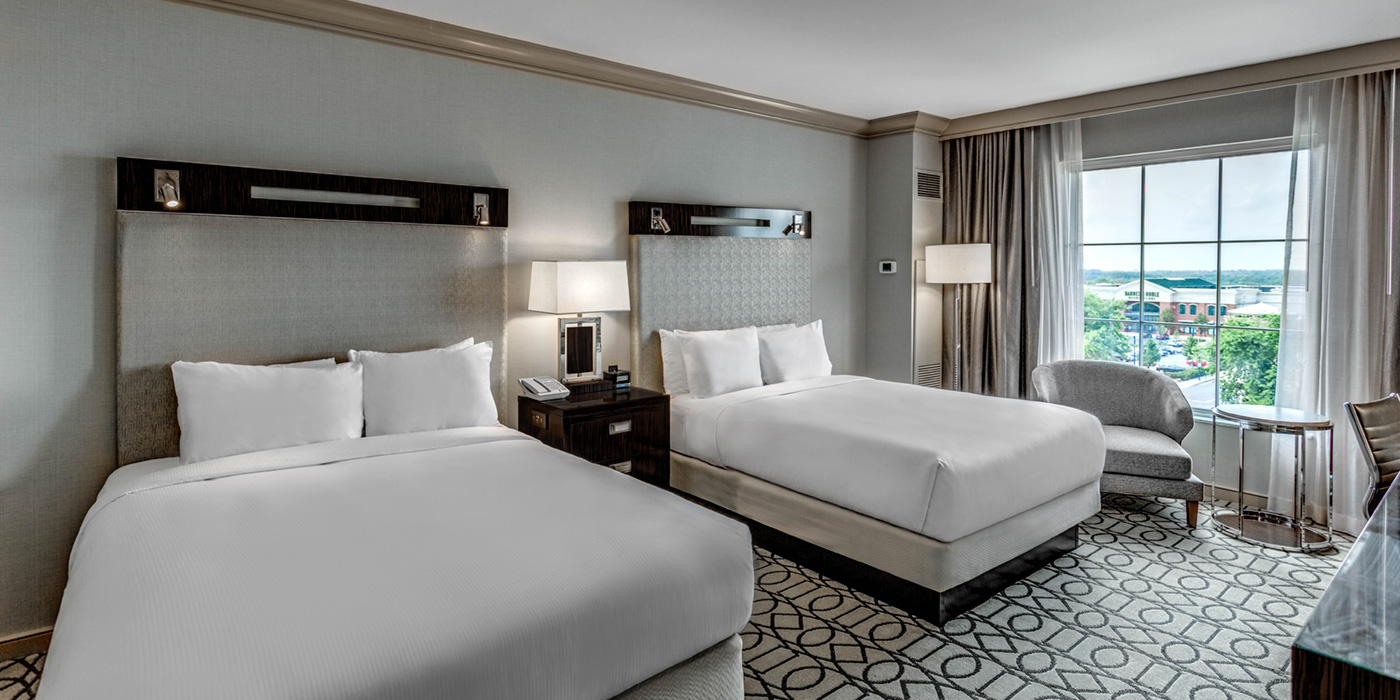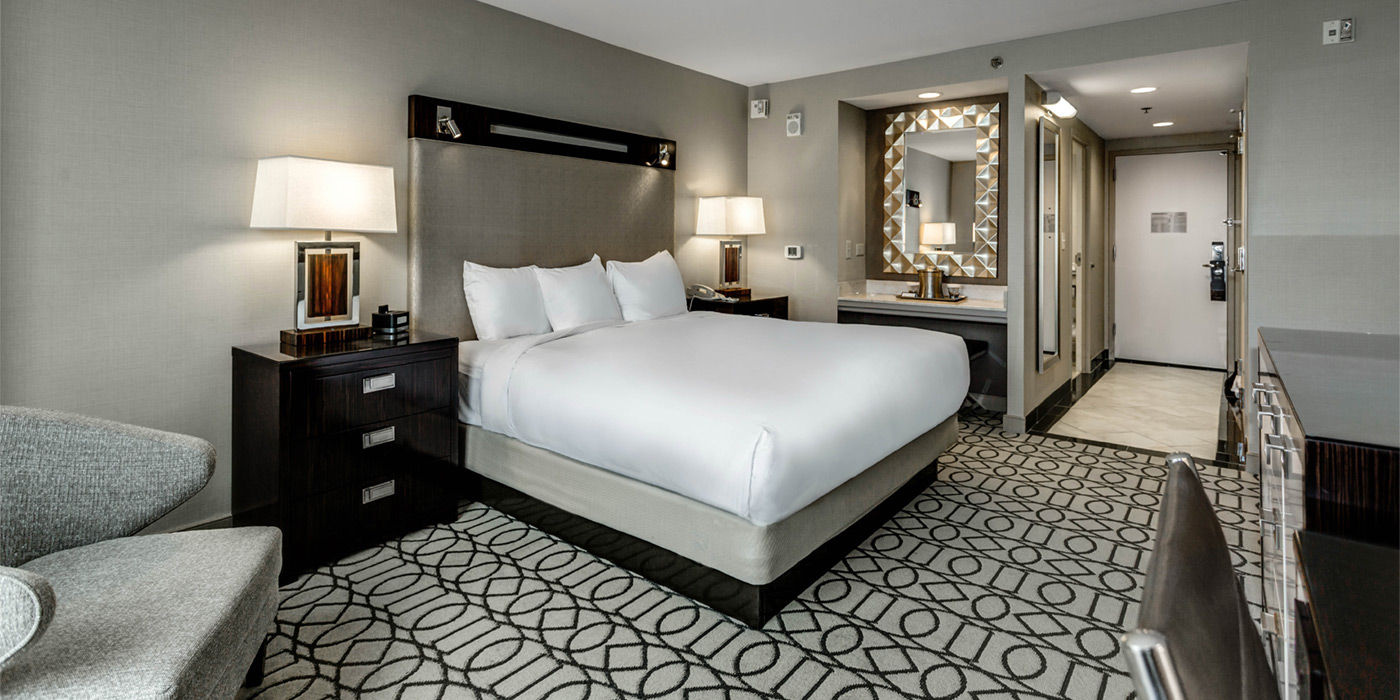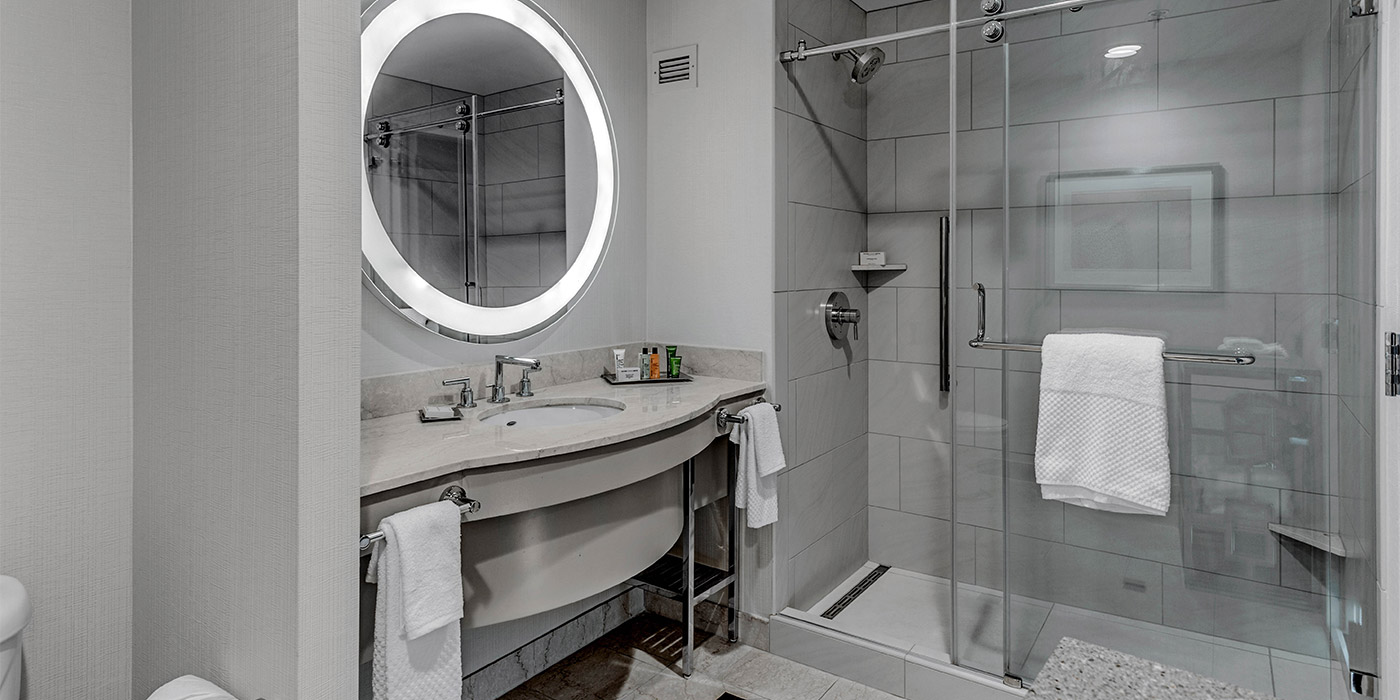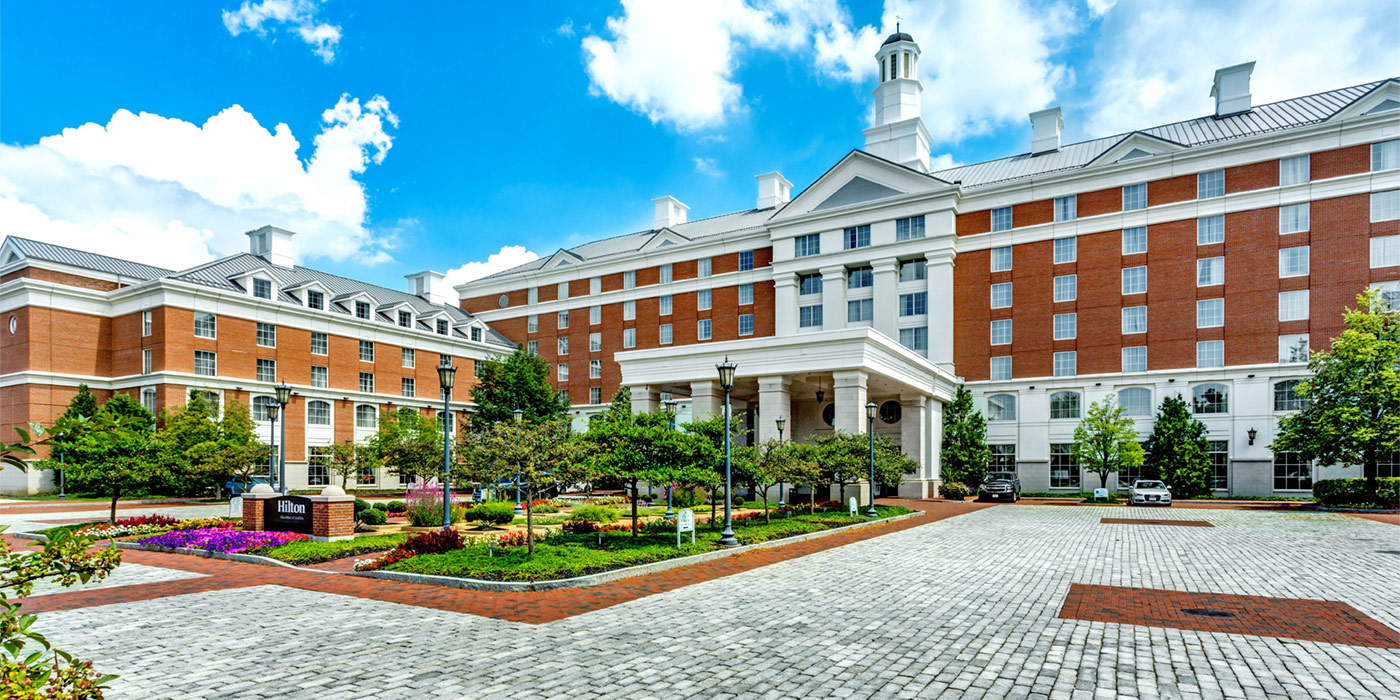Challenge
With a completely land-locked facility and zero ability to expand horizontally, the Hilton Columbus at Easton needed a solution to add guestrooms to accommodate their above-industry-standard occupancy rates.
Services Involved
- 3D Scanning
- Architectural Services
- Construction Administration
- Feasibility Study
- MEP Engineering
- Permitting
- Project Management
- Structural Engineering
The Hilton Columbus at Easton - Fifth Floor Guestrooms
The Hilton at Easton underwent an exterior and interior transformation that began in 2014.
With a need for more accommodations and no opportunity to build out, ms proposed a solution to expand guest rooms to the hotel’s fifth floor, a previously unoccupied attic storage space.
TRANSFORMING AN ATTIC INTO GUESTROOMS
ms consultants was tasked with converting the existing attic space into 26 guestrooms. Before initiation of full design phases, ms consultants studied the existing building systems to ensure that additional rooms could be accommodated without major upgrades to the water heating, fire protection, egress, and HVAC systems.
With the addition of an occupied fifth floor, the west stair towers also needed to be extended upward to reach the fifth floor for emergency egress. Additionally, dormers were added in order to provide windows and natural light to each guestroom. All of these improvements were designed to complement the Georgian architectural style of the facility.
BENEFITS OF 3D SCANNING TECHNOLOGY
Previously used for storage, the Hilton at Easton’s fifth floor was riddled with vents, ducts, storm drains and conduit penetrating the floor and walls. To better understand the existing building, ms used 3D scanning to document the existing conditions. The 3D point cloud was then used to create a Building Information Model (BIM) using Revit.
While using the technological capabilities—3D scanning, BIM, and Revit—the design team quickly learned that the existing drains and vents in the floor varied dimensionally from room to room. This seemingly small issues would have major consequences for the Hilton at Easton renovation.
These dimensional variations in the floor penetrations caused individual room sizes to vary by as much as three inches room to room. This had immediate consequences on the design of the floor plan.
By identifying this issue early in the design phase, the value of using these technologies was quickly realized.
A COMMON CHALLENGE – SHOWER DOORS
In hospitality projects, one of the largest lead-time construction specialties (other than furniture) are the shower doors.
By understanding and documenting the as-built dimensional characteristics, the construction team was not surprised by the disparity in room sizes for the Hilton at Easton. This resulted in a more accurate bid and a construction schedule that accounted for variations in a long-lead-time element.
If traditional survey were used, the design and management methods would have likely resulted in costly construction change orders and lengthy project delays.
With the use of 3D scanning and other technologies, the Hilton at Easton fifth floor renovation was completed efficiently and without any unwanted surprises.




